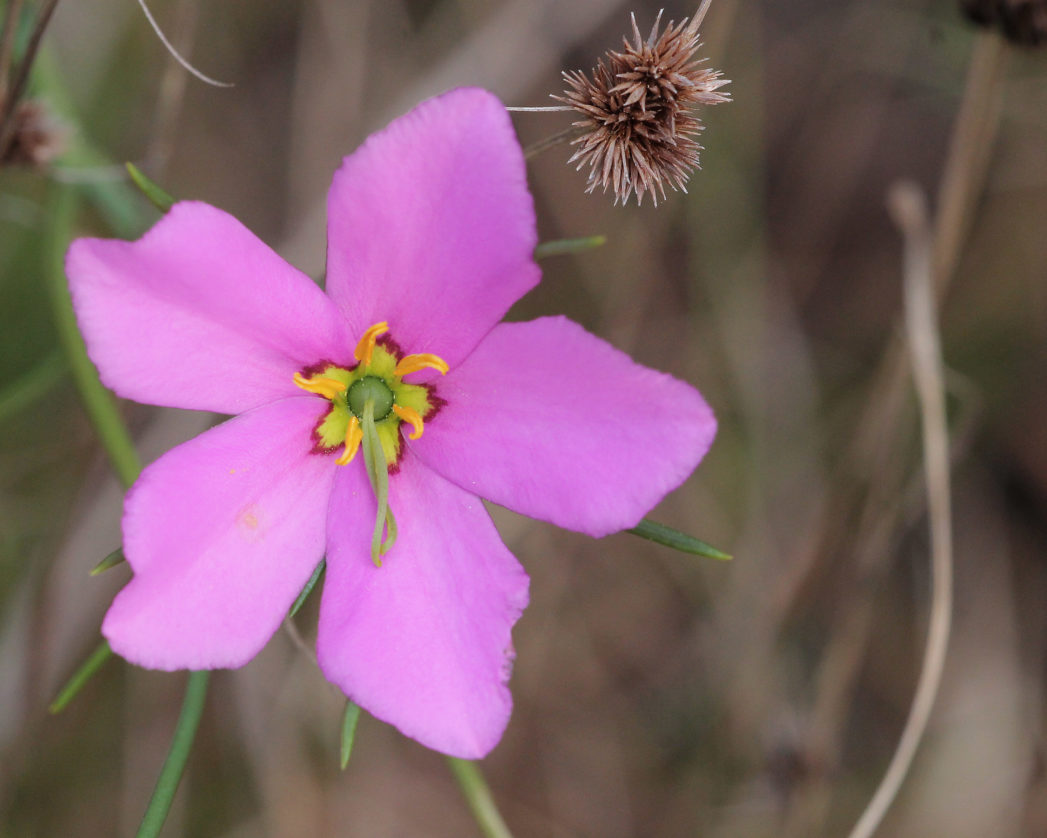Marsh-pink
Pictured above: Marsh-pink (Sabatia grandiflora) by Mary Keim. Click on terms for botanical definitions. View post as a PDF.
Also known as largeflower rosegentian, marsh-pink is a beautiful herbaceous wildflower found in moist, open areas throughout Florida. Its showy blooms are comprised of five bright pink petals. The base of each petal is yellow with a red outline; they come together to form a star in the center of the bloom. The stigma is prominent; it twists and protrudes from an obvious green ovary. Leaves are linear to filiform and oppositely arranged.
Marsh-pink occurs naturally in mesic pine flatwoods and wet prairies, as well as along margins of freshwater marshes. It is a summer bloomer in northern Florida, but can bloom year-round in southern Florida.
Marsh-pink is almost endemic, occurring in only one county in Alabama outside of the state of Florida.
Family: Gentianaceae (Gentian family)
Native range: Peninsula and some Panhandle counties
To see where natural populations of marsh-pink have been vouchered, visit www.florida.plantatlas.usf.edu.
Hardiness: 8A–11
Soil: Damp to wet, rich soil
Exposure: Full sun
Growth habit: 1–3’ tall
Propagation: Seed
Garden tips: Marsh-pink is not widely cultivated as it does not tolerate root disturbance. It does, however, produce an abundance of seeds that are easily sown.
For more information on other Sabatia species, see these resources:

